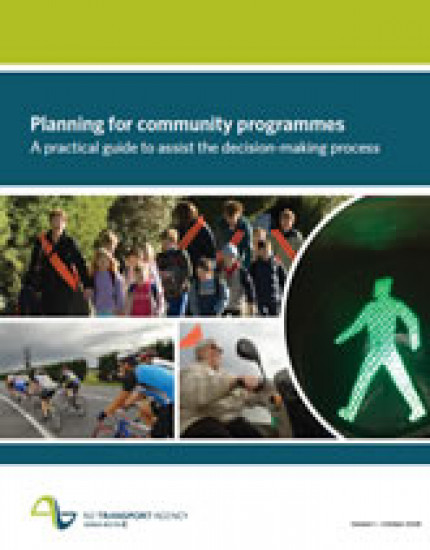A practical guide to assist the decision-making process in planning for community programmes.
Note: The Demand Management Community Programmes Activity class is currently under review, new guidance will be available in early in 2010.

The most crucial aspect of any analysis is definition of the issue. This is particularly important when considering the appropriateness of various activities. If a decision is made on the basis of an incomplete or incorrect definition of an issue, it is unlikely to lead to a satisfactory outcome. The key is to avoid jumping to early solutions without thorough issue definition in the context of the specific circumstances.
Analysis should not be undertaken in isolation of relevant external factors that will influence the decision on the most appropriate activity to select. Depending on the nature and scale of the issue being addressed, external factors could be a significant influence on decision-making. Assessment of the following matters should be considered when defining the issue.
Issue definition:
External factors to be taken into account:
Add and/or delete further questions as appropriate to local circumstances.
This stage involves the review of available activities and a ‘fit for purpose’ analysis and follows with an evaluation based on the relationships between activities, focusing on the use of packages.
Once the problem has been defined in some detail and with confidence and external factors understood, it is appropriate to review the various activities and analyse their ability to address the issue. This will effectively provide a shopping basket of activities that can be further considered for adoption and implementation. Consideration of a range of questions will help determine if an activity is fit for the purpose required, and the likelihood of any implementation programme addressing the identified issue.
To further assist in making decisions between activities and focusing on the possibility of solutions involving a package of activities, it will be important to understand the relationships between them. This understanding can be achieved through answering questions such as those below and reviewing the relationship comparison information provided for key activities or using the template to carry out analysis of additional activities (see Part 2).
Analysis of activities:
Add and/or delete further questions as appropriate to local circumstances.
Together, stages 1 and 2 provide the framework to make a decision. As a final check, the following template may help present key information in a concise manner.

This stage is not covered in this guide.
The final stage, the importance of which should not be undervalued, is for an objective review to take place of the effectiveness of the activity or package of activities in addressing the issue defined and contributing to stated targets. The outcome of such a review should, where appropriate, be taken into account in the continued application of the activity or activities in the specific situation and also be part of any future consideration of the use of the activity or activities in other situations.
The successful implementation of community programmes can provide the opportunity for wider benefits, including more extensive travel behaviour change, a greater sense of community and other forms of community development. Effective review will help identify these so learning can be shared and built upon.
The assessment table provides a possible template to use for such a review. The template is based on the NZTA's three assessment factors used in the funding allocation process: seriousness and urgency, effectiveness, and economic efficiency.
Page created: 13 November 2008